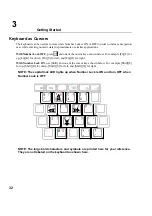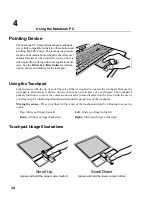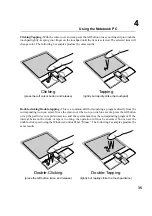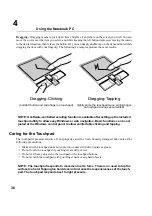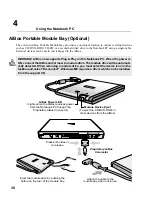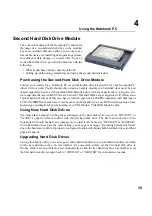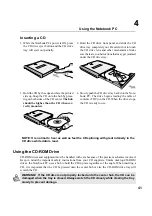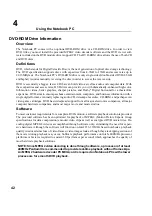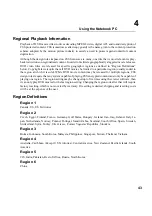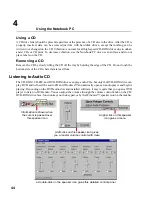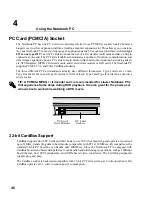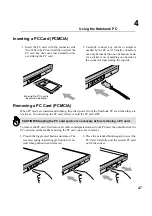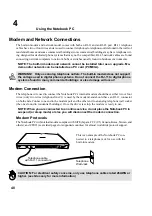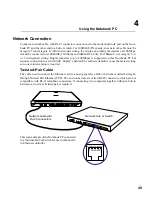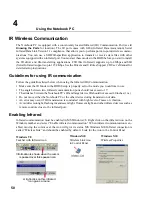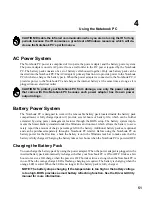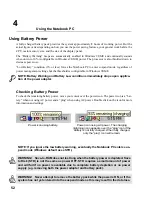
46
Using the Notebook PC
4
32-bit CardBus Support
CardBus support allows PC Cards and their hosts to use 32-bit bus mastering and operate at speeds of
up to 33MHz, transferring data in burst modes comparable with PCI’s 132MB/sec. By comparison, the
standard 16-bit PC Card bus can handle only 20MB/sec. Since the Notebook PC is equipped with
CardBus broader and faster data pathway, it can handle bandwidth-hungry operations, such as 100Mbps
Fast Ethernet, Fast SCSI peripherals, and ISDN-based video conference. The CardBus peripherals
support plug and play.
The CardBus socket is backward-compatible with 16-bit PC Cards serving at 5 volts operation while
CardBus operates at 3.3 volts to reduce power consumption.
PC Card (PCMCIA) Socket
The Notebook PC has one PC Card (or sometimes referred to as PCMCIA) sockets located behind a
hinged cover to allow expansion just like a desktop computer expansion slot. This allows you to custom-
ize your Notebook PC to meet a wide range of application needs. The socket can interface with two type
I/II or one type III PC card. PC cards are about the size of a few stacked credit cards and have a 68-pin
connector at one end. The PC Card standard accommodates a number of function, communication, and
data storage expansion options. PC cards come in memory/flash cards, fax/modems, networking adapt-
ers, SCSI adapters, MPEG I/II decoder cards, and even wireless modem or LAN cards. The Notebook PC
supports PCMCIA 2.1, and 32bit CardBus standards.
The three different PC Card standards actually have different thicknesses. Type I cards are 3.3mm,
Type II cards are 5mm, and Type III cards are 10.5mm thick. Type I and Type II cards can be used in a
single socket.
TIP: A PCMCIA MPEG I / II decoder card is recommended for slower Notebook PCs
that experience frame skips during DVD playback. It is also great for the power user
who wishes to work while watching a DVD movie.
PC Card
Eject Buttons
PC Card
Sockets
Summary of Contents for T9A
Page 11: ...10 About This User s Manual Notes For This Manual 1 Introducing the Notebook PC ...
Page 13: ...12 Top Side Bottom Side Left Side Right Side Rear Side Front Side 2 KNOWING THE PARTS ...
Page 81: ...80 APPENDIX Internal Modem Compliancy Glossary Owner Information ...
Page 84: ...84 APPENDIX A ...
Page 91: ...91 APPENDIX A ...

